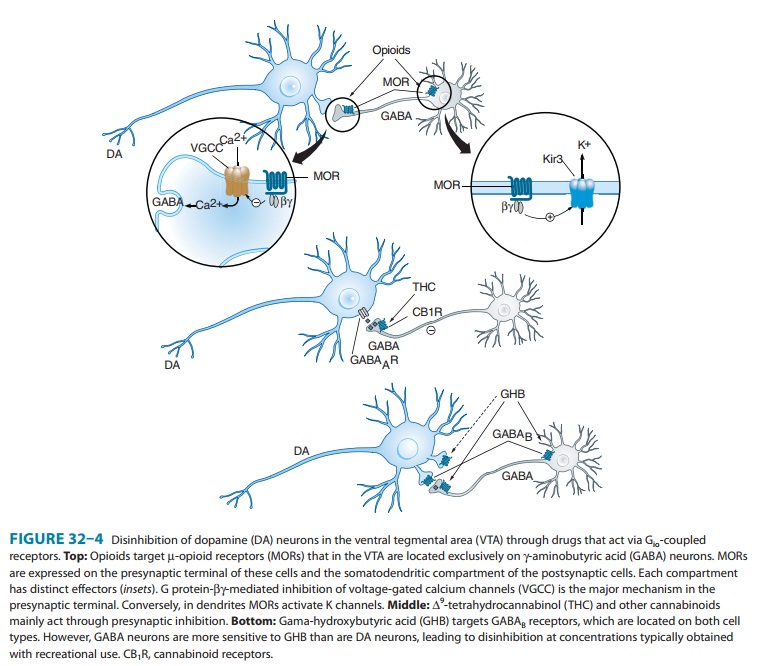Chapter: Basic & Clinical Pharmacology : Drugs of Abuse
Gamma-Hydroxybutyric Acid - Drugs That Activate Gio-Coupled Receptors
GAMMA-HYDROXYBUTYRIC ACID
Gamma-hydroxybutyric
acid (GHB) is produced during the metabolism of GABA, but the function of this
endogenous agent is unknown at present. The pharmacology of GHB is complex
because there are two distinct binding sites. The protein that con-tains a
high-affinity binding site (1 μM) for GHB has been cloned, but its
involvement in the cellular effects of GHB at phar-macologic concentrations
remains unclear. The low-affinity bind-ing site (1 mM) has been identified as
the GABA B receptor. In mice that lack GABAB
receptors, even very high doses of GHB have no effect; this suggests that GABAB
receptors are the sole mediators of GHB’s pharmacologic action.
GHB was first synthesized
in 1960 and introduced as a general anesthetic. Because of its narrow safety
margin and its addictive potential, it is not available in the USA for this
purpose at present. It can however be prescribed (under restricted access rules)
to treat narcolepsy, because GHB decreases daytime sleepiness and episodes of
cataplexy through a mechanism unrelated to the reward system. Before causing
sedation and coma, GHB causes euphoria, enhanced sensory perceptions, a feeling
of social closeness, and amnesia. These properties have made it a popular “club
drug” that goes by colorful street names such as “liquid ecstasy,” “grievous
bodily harm,” or “date rape drug.” As the latter name suggests, GHB has been
used in date rapes because it is odorless and can be readily dissolved in
beverages. It is rapidly absorbed after ingestion and reaches a maximal plasma
concentration 20–30 minutes after ingestion of a 10–20 mg/kg dose. The
elimination half-life is about 30 minutes.
Although GABAB
receptors are expressed on all neurons of the VTA, GABA neurons are much more
sensitive to GHB than are dopamine neurons (Figure 32–4). This is reflected by
the EC50s, which differ by about one order of magnitude, and
indicates the dif-ference in coupling efficiency of the GABAB
receptor and the potas-sium channels responsible for the hyperpolarization.
Because GHB is a weak agonist, only GABA neurons are inhibited at the
concentra-tions typically obtained with recreational use. This feature may
underlie the reinforcing effects of GHB and the basis for addiction to the
drug. At higher doses, however, GHB also hyperpolarizes dopamine neurons,
eventually completely inhibiting dopamine release. Such an inhibition of the
VTA may in turn preclude its activation by other addictive drugs and may
explain why GHB might have some usefulness as an “anticraving” compound.

Related Topics